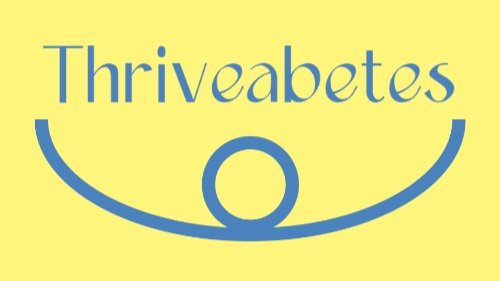How do I get a Continuous Glucose Monitor CGM?
This page was last updated 23 October 2024
Continuous Glucose Monitor CGMs are available through the HSE’s Long-Term Illness Scheme. They can also be purchased online directly from the company or through your local chemist, but they can be expensive. Some of the companies offer free trials of their CGMs before buying if you are unsure if a CGM is for you.
This page contains:
Links to Information Sources
Note: If you are self-funding your sensors, there are tax refunds you can claim; see the section below on how to claim tax refunds for more details.
CGMs covered by the HSE
In July 2024, the HSE announced a list of preferred CGMs covered by the Long Term Illness Scheme. The CGMs preferred for people not using insulin pumps are Dexcom One+ and Freestyle Libre2.
If you have a clinical reason not to use either of these CGMs or are using an insulin pump, the choices on List B are available to you. List B includes Dexcom G6 and G7, GlucoRx Aidex and Medtronic Guardian systems (G4). The Freestyle Libre1 has been phased out since the 30th of September, 2024.
The button below links to the list of CGMs available in Ireland, detailing some of their features and contact details for the companies providing them.
Are you eligible for a HSE-funded CGM?
Criteria #1: You must have Type 1 Diabetes to be eligible for CGMs on this webpage.
“Reimbursement of CGMs has not been extended to any other types of diabetes at the present time” (HSE Pharmacy Circular 033/23).
Unfortunately, if you are an adult who does not have type 1 diabetes, you are not eligible for an HSE-funded CGM. Hopefully, this type 2 diabetes-specific stigma will be amended for people with type 2 who are insulin dependent soon, as this implies that they are less deserving of the tools that are crucial in insulin management.
How do I apply for an HSE-funded CGM?
There have been a number of changes to how the application system works - all in since December 1, 2023. There is now a single reimbursement application system for all CGMs.
There are now two steps to get approval for a HSE-funded CGM:
Step 1. Talk to your Diabetes Team
From the 1st of December 2023, the only individual who can now submit an application for ALL CGMs is your diabetes consultant or team. You will also need a prescription to take to your chemist (see Step 2).
Your team will submit an application through the HSE Primary Care Reimbursement Service (PCRS) Special Drug Request online reimbursement application system. The CGM sensors online reimbursement application system is also available through the PCRS website www.pcrs.ie [PCRS Online Services> Services for Hospitals> CGM Sensor Reimbursement Application] (Source: CGM Sensors Reimbursement Application System).
The application is reviewed and approved by the HSE Medicines Management Programme (MMP). “Approval can be confirmed through the online Secure Schemes Checker under ‘Patient Specific Arrangements’ from 1st December 2023. Pharmacies can dispense CGM sensors” (HSE Circular 033/23).
Step 2. Prescription for Sensors
Once your diabetes team has issued you a prescription for your sensors, you can take it to your chemist to get your sensors.
The chemist will need to confirm approval through the online Secure Schemes Checker under ‘Patient Specific Arrangements’ from 1st December 2023.
Happy CGM-ing!
Information for those self-funding CGM
Continuous Glucose Monitor CGMs are available to buy online through each company's website or your local chemist, but they can be expensive. However, this is a good way to explore if they will work for you, and people with type 2 diabetes might like to try this option until the eligibility criteria are changed.
Some of the companies also offer free trials of their CGMs before buying, which is also an option for you. Our webpage “CGMs in Ireland” has links to all the companies’ websites where you can find their online stores.
If you do end up self-funding your CGM, there are tax refunds you can claim, such as a VAT refund AND you can claim an income tax refund on the remaining cost as part of your Health Expenses when you fill out your annual Income Tax Return.
Claim a VAT Refund
The VAT refund is 23% of the cost, and you will need to have copies of your receipts as proof of purchase. The revenue’s webpage on how to Apply for a refund of Value-Added Tax (VAT) explains the process well. This claim is specifically for people with disabilities. However, diabetes is legally recognised as a disability in order to be included in the Long-Term Illness scheme.
Claim an Income Tax Refund
You can also claim income tax relief on the cost of all your health expenses when you are completing your end-of-year tax return. You generally receive tax relief for health expenses at a standard tax rate (20%). The revenue’s webpage, how to claim health expenses explains this process in more detail. This used to be done through the old MED1 Form.
The information provided on this webpage has been sourced from;
HSE Pharmacy Circular 033/23 RE: Continuous Glucose Monitoring (CGM) Reimbursement Application System November 2023
HSE Pharmacy Circular 028/23 RE: Continuous Glucose Monitoring (CGM) October 2023
Rapid Health Technology Assessment of Continuous Glucose Monitoring in Adults with Type 1 Diabetes Mellitus (September 2023)




